Short answer: Speaking of age only (as opposed to physical limits of a tire) If you have a full size spare, it should be replaced after exceeding 10 years past the (in the United States, this is the DOT stamped date on the tire) manufacture date. If you have a donut, the same 10 year recommendation applies but not all tires are equal.
Although there is an accepted answer, that answer adheres to government standards designed with safety in mind, my answer is more to inform so that someone understands why their tire would need to be replaced.
Disclaimer: I don't ever replace the donuts on any of my cars because they have been in good condition even at 15, 20 years.
Second Disclaimer: I always get triggered watching tire salespeople tell someone they need to change their donut and quoting them $400 when the tire is in good condition. This generates mistrust in people and results in them being no longer trusting of professionals.
A tire only needs to be replaced once it has reached the physical limits of the tire or the rubber has begun to degrade and fail.
Physical limits of a tire are when the tire is no longer able to perform upto the specification it was manufactured to.
Common limits are:
Rubber has degraded once it's chemical structure has changed to the point that the tensile strength, color, shape, etc of the rubber has changed.
Rubber has failed once the material no longer retains its bonds. The material separates, resulting in a tear, hole, separation, etc causing the rubber to no longer be able to support itself.
Think of degradation as the rubber chemically changing, and a failure as a physical change.
Broad catergories would be:
Root causes would be:
Chemicals and Ozone/UV
The kind of chemicals/processes that destroy rubber are well documented on the Wikipedia for polymer degradation. I have quote paraphrased items from the page for things relevant to tires.
I have quote paraphrased items from the page for things relevant to tires.
Ozonolysis and Ozone cracking
Ozone cracking in Natural rubber tubing Cracks can be formed in many different elastomers by ozone attack. Tiny traces of the gas in the air will attack double bonds in rubber chains, with Natural rubber, polybutadiene, Styrene-butadiene rubber and NBR being most sensitive to degradation. Ozone cracks form in products under tension, but the critical strain is very small. The cracks are always oriented at right angles to the strain axis, so will form around the circumference in a rubber tube bent over. The problem of ozone cracking can be prevented by adding anti-ozonants to the rubber before vulcanization. Ozone cracks were commonly seen in automobile tire sidewalls, but are now seen rarely thanks to these additives.
Photo-oxidation of polymers
The polymers are susceptible to attack by atmospheric oxygen, especially at elevated temperatures encountered during processing to shape.
Many process methods such as extrusion and injection moulding involve pumping molten polymer into tools, and the high temperatures needed for melting may result in oxidation unless precautions are taken.
The Wikipedia article goes into greater scientific detail but the takeaway is that any oxidation based defect is likely to originate from manufacturer. The only other way for oxidation to affect the tire is for it to be exposed to something else that is oxidizing (like iron oxide aka rust).
Galvanic action
In early 1990, it was reported that imide-linked resins in CFRP composites degrade when bare composite is coupled with an active metal in salt water environments. This is because corrosion not only occurs at the aluminum anode, but also at the carbon fiber cathode in the form of a very strong base with a pH of about 13. This strong base reacts with the polymer chain structure degrading the polymer. Polymers affected include bismaleimides (BMI), condensation polyimides, triazines, and blends thereof.
Degradation occurs in the form of dissolved resin and loose fibers.
CFRP is commonly used in tires, the tldr is salt can corrode some of the material in a tire. Some is enough to cause material degradation.
Chlorine-induced cracking
Chlorine is a highly reactive gas, which will attack susceptible polymers such as acetal resin and polybutylene pipework. In essence, the gas attacks sensitive parts of the chain molecules (especially secondary, tertiary, or allylic carbon atoms), oxidizing the chains and ultimately causing chain cleavage.
Chlorine effectively dries rubber out and damages molecules by reacting with and changing them.
Others
Heat, Abrasion, Tearing, Excessive Pressure/Compression are somewhat self explanatory. The tie directly to the physical limits of a tire.
Fatigue
Fatigue is caused generally by things like inconsistent inflation (i.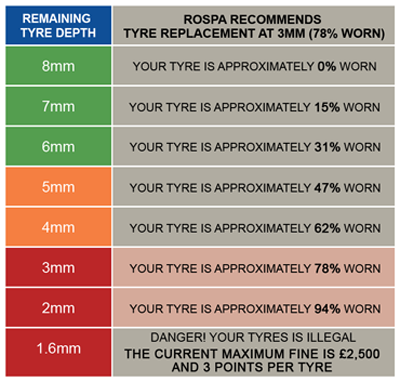 e. a leaking valve steam causes the user to just air up the tire before every drive), time-driven, generally diagnosable by micro-cracking or what industry calls "dry-rot" (i.e. google michelin dry rot).
e. a leaking valve steam causes the user to just air up the tire before every drive), time-driven, generally diagnosable by micro-cracking or what industry calls "dry-rot" (i.e. google michelin dry rot).
Set There's also another thing I didn't mention above because its hard to see the uniqueness of it as a failure point. In the rubber industry, there a term, 'set', which refers to tension maintained for a period of time and then released.
A good example of this is measuring the stress on an object as an output of strain. Through this we can measure deformation.
Example: You squeeze a basketball and let go. You do it a second time. If the strain put on the ball was equal each time, the stess is equal. Well, if you squeeze the ball so hard it pops, the stress is no longer the same because the ball is deformed.
This is why my friend who drives over potholes everyday keeps having to buy new tires. It is not that the final pothole caused a failure in his tire, the cause is a previous pothole putting so much strain on the tire it was deformed.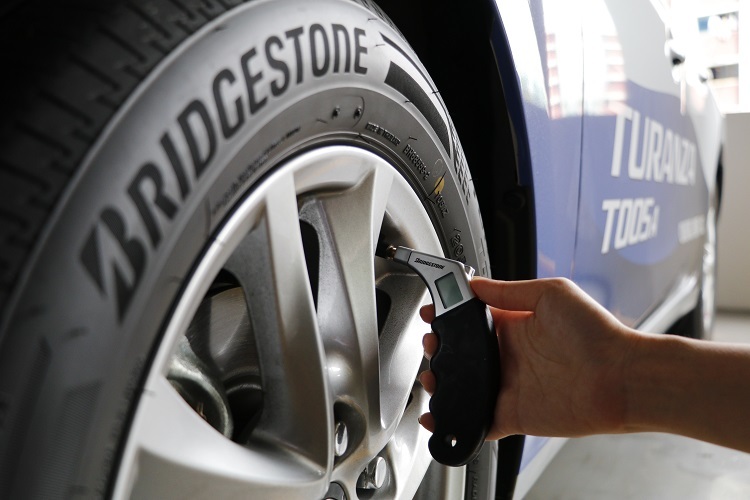 The tire slowly deforms more as additional strain is put on it, until it fails.
The tire slowly deforms more as additional strain is put on it, until it fails.
Because none of these things happen in a clean dry trunk. If you have never taken the spare out of your trunk/hatch, and there is no moisture in your trunk/hatch. There's nothing to degrade your tire or make it approach it's physical limits.
Armed with my somewhat useless knowledge of rubber and tires, everytime I have had a flat in one of my many 10+ year old cars. I would pull out my spare that I kept inflated along with the rest of my tires. I would inspect it for cracking or signs of degradation. The tire rubber would still be supple and flexible with no signs of impeding doom.
This is not me endorsing driving on a 10+ year old donut.
Ask a question, get an answer ASAP!
☰
×
GET A QUOTE
| Save Big on Auto Repairs | Get a Quote |
A spare tire is solely meant for use in an emergency, or as a short term replacement for a flat or damaged tire. It is not meant for everyday or extended use, and tire manufacturers have specific criteria for their usage.
It is not meant for everyday or extended use, and tire manufacturers have specific criteria for their usage.
Compact spare tires, also known as donuts, are thin tires with with a space-saving design. Because there is such a small amount of inflated rubber to cushion the vehicle over bumps and there is so little tread, they are meant for extremely limited use. Basically, if the spare tire has been installed, it is meant to be replaced as soon as possible.
Compact spare tires:
Are meant for use at speeds no higher than 50 mph.
Are to be used for a cumulative distance of no more than 50 miles.
Are not for use with all-wheel drive vehicles, nor for vehicles with four-wheel drive engaged.
Full-sized spare tires:
Full-sized spare tires used to be much more commonplace than they are now due to their versatility. In many cases, the spare tire could be installed on the vehicle and simply rotated into use. Slowly they made way for compact spare tire usage, which took up much less cargo space. If your vehicle has a full-sized spare, it is likely designated as a spare tire and not a passenger-use tire. It should not be used as a long-term replacement for a flat or damaged tire on your vehicle.
Slowly they made way for compact spare tire usage, which took up much less cargo space. If your vehicle has a full-sized spare, it is likely designated as a spare tire and not a passenger-use tire. It should not be used as a long-term replacement for a flat or damaged tire on your vehicle.
If you’ve experienced a flat tire and have used your spare tire, check with the specifications on the sidewall to determine if it needs to be replaced or can be stowed again for future use. Consult the manufacture date on the sidewall to determine if the tire is over 10 years old. If it is, have it replaced, regardless of condition, for your safety.
Speed Rating
Load Range
Spare Tire
Compact Spare
The statements expressed above are only for informational purposes and should be independently verified. Please see our terms of service for more details
4.2 Average Rating
Service Hours
7 AM - 9 PM
7 days a week
Phone Number
1 (855) 347-2779
Phone Hours
Mon - Fri / 6 AM - 5 PM PST
Sat - Sun / 7 AM - 4 PM PST
Address
We come to you at no extra charge
Guarantee
12-month/12,000-mile warranty
Our certified mobile mechanics perform over 600 services, including diagnostics, brakes, oil changes, scheduled mileage maintenances, and will come to you with all necessary parts and tools.
Get a fair & transparent quote instantly before booking.
Earn up to
$70/hr
Apply Now
Our certified mobile mechanics make house calls in over 2,000 U.S. cities. Fast, free online quotes for your car repair.
GET A QUOTE
GET A QUOTE
Is it Safe to Drive With a Donut Tire?
When one of your tires goes out, it is replaced with a donut tire (also called a spare tire, although...
How to Change a Tire
Knowing how to change a flat tire is a valuable skill if your car breaks down. Jack stands, road flares, and tire pressure gauges help tire changes.
Tire Maintenance and Safety: How To Care For Your Tires(DELETED)
Tires need to be maintained just like every other part of your vehicle
How do I calculate the load carried ?
It’s easy to think that your car can carry pretty much whatever you can cram inside, but that’s not actually the case. Your car has a weight limit, and it’s probably not as high as you think. This limit includes...
Your car has a weight limit, and it’s probably not as high as you think. This limit includes...
How do I know when the spare tire needs to be replaced?
Like your primary tires, your spare will eventually wear out. However, you should have years of trouble-free use out of it. Because it’s used only during emergencies, it should last a very long time. With that being said, you should...
Flat tire, not sure what to do
Hello, thanks for writing in. You should not drive the car on the flat tire or else you will ruin the tire and rim. You should have a spare tire in the trunk (https://www.yourmechanic.com/article/how-to-change-a-tire) that can be put on in...
Cities
Estimates
Maintenance
Our service team is available 7 days a week, Monday - Friday from 6 AM to 5 PM PST, Saturday - Sunday 7 AM - 4 PM PST.
1 (855) 347-2779 · hi@yourmechanic.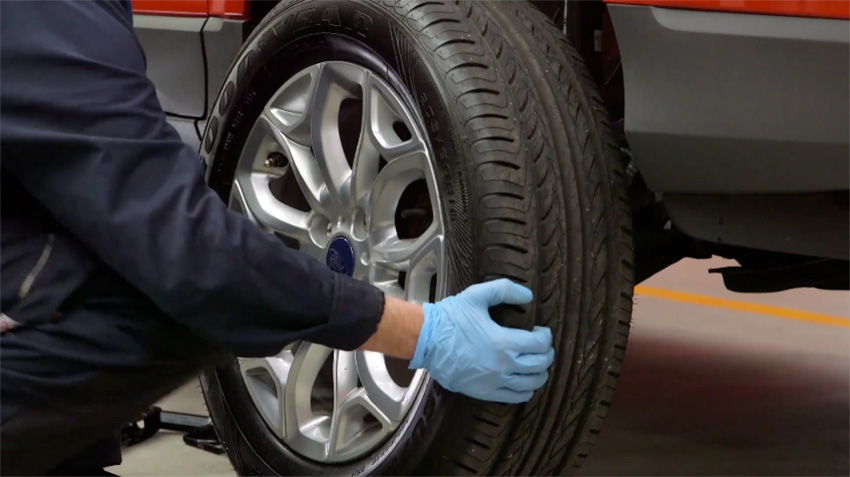 com
com
Read FAQ
GET A QUOTE
contact center from 7:30 to 22:00
BlogReserve and stowaway: what's the difference?
You can always argue that a full-fledged spare wheel or dokatka is better. In the end, it will not be possible to find the truth, because both options have advantages and disadvantages. Experienced drivers are sure that it is impossible to leave the garage without a full-fledged spare wheel, especially if there is a long road ahead. This "tradition" is due to the fact that earlier it was possible to drive tens of kilometers to the nearest tire fitting. Dokatka is a new version of the spare tire, which managed to immediately win a lot of fans.
Which option looks more preferable, we will consider in our article.
The stowage spare wheel is smaller in size (rim diameter and width) than a full size wheel. This is a relatively new invention that has appeared recently.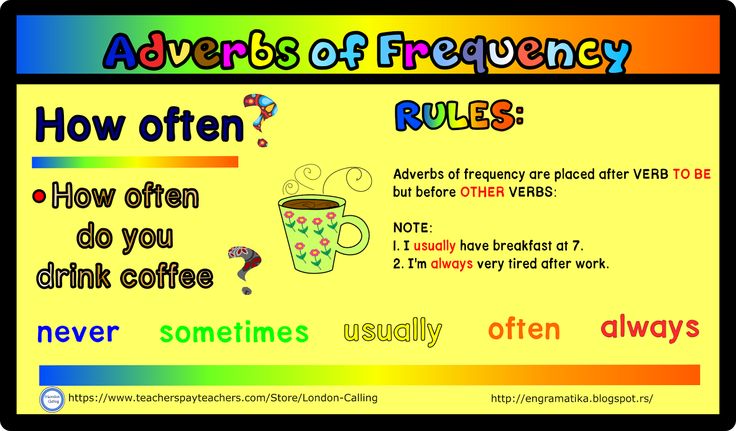 Initially, only premium cars were equipped with it, but today most car models are equipped with such a spare element.
Initially, only premium cars were equipped with it, but today most car models are equipped with such a spare element.
The function of rolling is minimal - get to the nearest tire shop. Usually these are models with a lightweight design, which saves not only space in the trunk, but also fuel, due to its lower weight. Smaller dimensions and weight make it easy to change the wheel.
To ensure a safe and trouble-free drive to the service station, you should follow a few tips:
Advantages of a compact spare tire:
DOCTUCT has disadvantages:
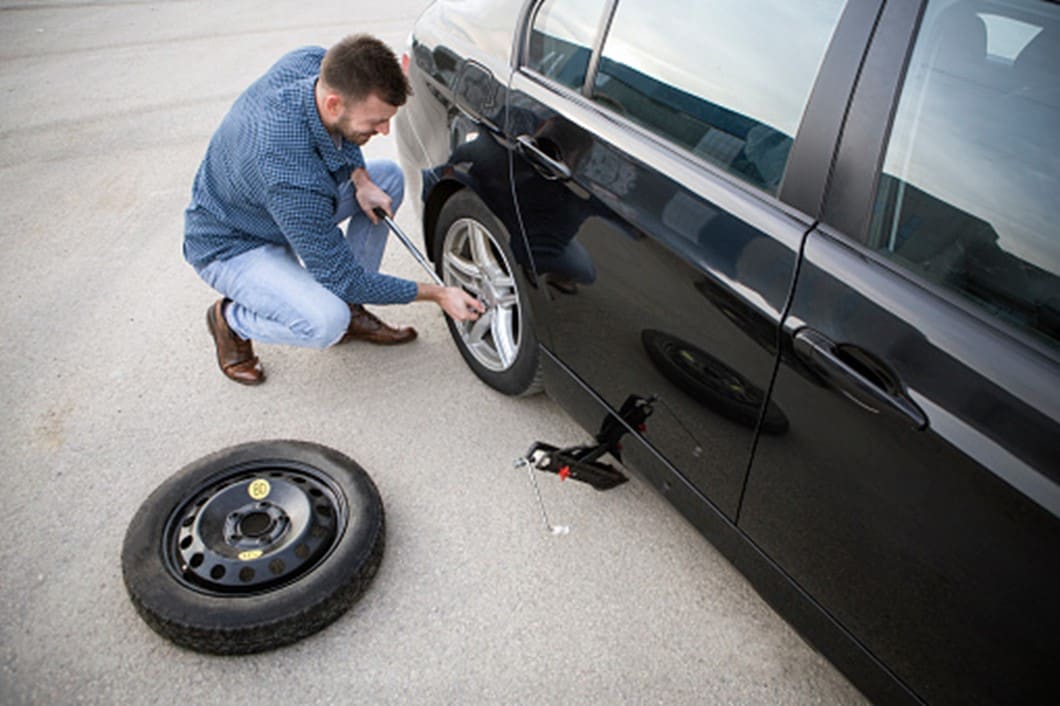 The latter often left behind nails (fell out of the horseshoes), which often spoiled the rubber of the car. A puncture in those days was not uncommon, as well as repairs right on the road.
The latter often left behind nails (fell out of the horseshoes), which often spoiled the rubber of the car. A puncture in those days was not uncommon, as well as repairs right on the road. Today, the kit of any car model includes a fifth, spare wheel. The legislation of many states prohibits the operation of the machine without a spare wheel. But regulations do not regulate the type of this item of equipment, leaving the choice to automakers. That is, it can be a dokatka or a full-fledged spare wheel.
The standard spare wheel is the same tire disk as those already installed by car. According to the traffic rules, it is necessary to change the tires on the spare tire to summer or winter so that they correspond to the season. The main disadvantage of a full-size spare tire is the fact that it takes up a lot of space, especially when the regular wheels and tires of the car are massive. It also increases its weight.
Benefits of a conventional spare tire:
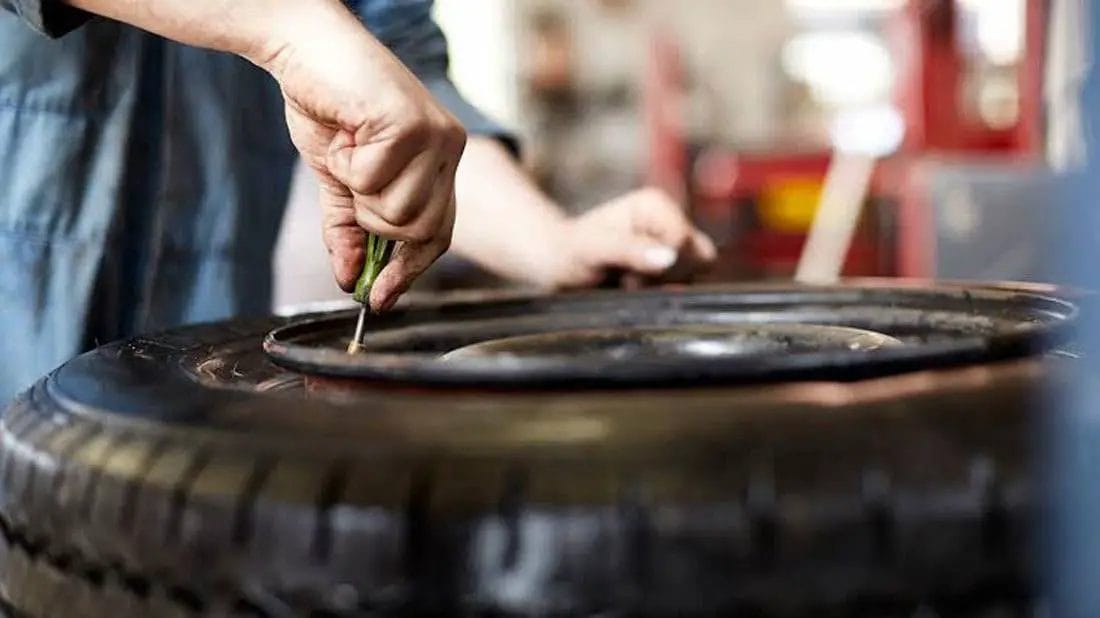 That is, you don’t need to slow down, you can drive a long distance (but this is not recommended, because in the event of a puncture there will be nothing left but to call a tow truck), there is no need to turn off the stabilization systems;
That is, you don’t need to slow down, you can drive a long distance (but this is not recommended, because in the event of a puncture there will be nothing left but to call a tow truck), there is no need to turn off the stabilization systems; Of the minuses can be identified:
Many car enthusiasts completely refuse the spare wheel, especially when they rarely leave the city. This is a dubious decision, because in the event of a tire puncture, you will have to pay for the services of a tow truck or drive on a flat tire, which can adversely affect the safety and technical condition of the car. In terms of safety and driving comfort, there is definitely no better full-size spare wheel. In this case, you can drive to any service station at any speed (allowed by traffic rules). To do this, you need to be able to work with a jack and a wheel wrench. The dokatka saves space, and it is somewhat easier to install it.
In terms of safety and driving comfort, there is definitely no better full-size spare wheel. In this case, you can drive to any service station at any speed (allowed by traffic rules). To do this, you need to be able to work with a jack and a wheel wrench. The dokatka saves space, and it is somewhat easier to install it.
The site uses cookies (cookies)
By continuing to use the site you agree to the collection of data about your visit to the site.
Tires and wheelsSergey3529
Puncturing a wheel is a situation in which any driver can find himself. It is for this case that the car should have a spare tire. And if with summer tires almost everything is clear (we will also talk about the main points), then with winter tires everything is somewhat more complicated.
In spare parts on modern cars, everything is ambiguous. The most practical option - a full-fledged wheel - is much less common today than a couple of decades ago. In pursuit of saving space and a couple of kilograms of weight, manufacturers are increasingly giving a stowage kit with a car, which is at least smaller than the base wheel.
[stextbox id='info'] Some models today don't even have a download. In the same Mini, for example, its absence should be compensated by special run-flat tires that can withstand the road to the service station without a critical pressure drop. [/ textbox]
On it you need to get to the nearest tire fitting, where the punctured wheel is already being repaired. In rare cases, you can accelerate to 110 kilometers on the dokatka, most often it is not recommended to exceed the mark of 80 km / h.
The drivers themselves prefer to change the dokatka for a normal spare tire (if, of course, there is a place for it in the car). The spare tire, recall, should be from the same set as the main tires, that is, it is better to buy a set of 5 rather than 4 wheels. It is also recommended to change the spare tire from time to time with other wheels so that the wear is approximately the same.
The spare tire, recall, should be from the same set as the main tires, that is, it is better to buy a set of 5 rather than 4 wheels. It is also recommended to change the spare tire from time to time with other wheels so that the wear is approximately the same.
If some drivers are still ready to put up with the purchase of the fifth wheel from the summer set, then not everyone agrees to purchase an extended winter set, and riding all year round with a summer spare tire or a dokatka, which is especially dangerous in winter.
In times when not everyone can afford to change tires as they wear out, buying an extra wheel that may not be needed for several years often seems counter-intuitive. Especially when it comes to winter tires, as a rule, more expensive.
But what if you still need to replace the wheel in winter, but you don’t have a normal wheel with you? There are several options.
 Many methods are offered today, ranging from traditional patches and harnesses to sealing compounds.
Many methods are offered today, ranging from traditional patches and harnesses to sealing compounds. So if you pierced the front wheel in winter, and you only have a summer spare tire with you, you will first have to rearrange the rear wheel forward, and put the spare in its place.
[stextbox id='warning']Important note: this will only work with front-wheel drive cars, for rear-wheel drive cars, purchasing a seasonal spare becomes even more relevant.[/stextbox]
the direction of the nearest tire fitting (carrying out “transportation to the place of repair”, according to the traffic rules), not forgetting that the dynamics of the car can change significantly.